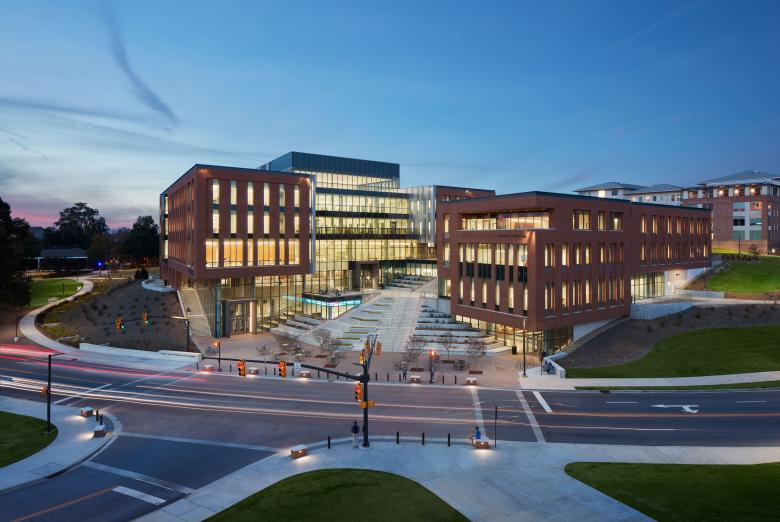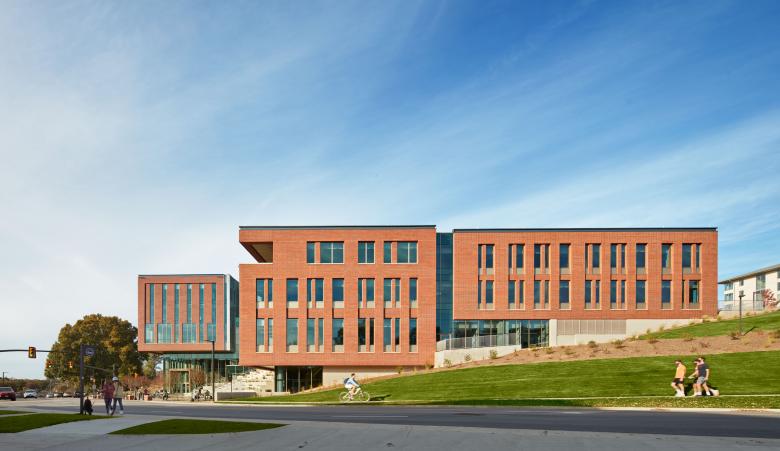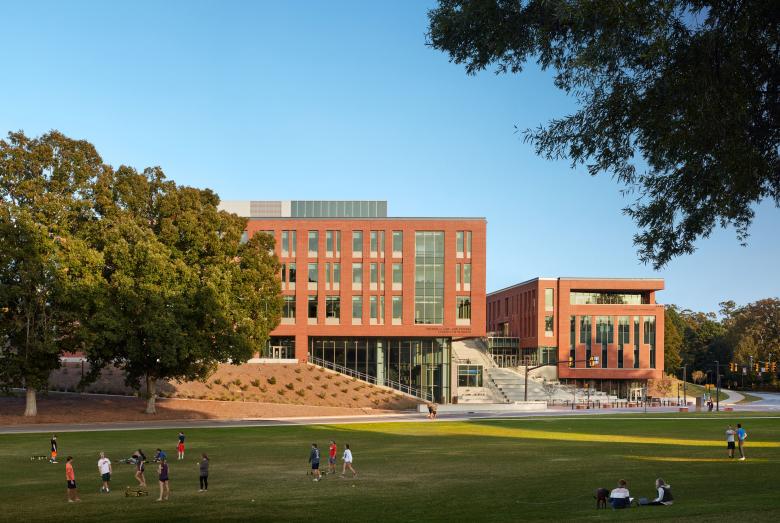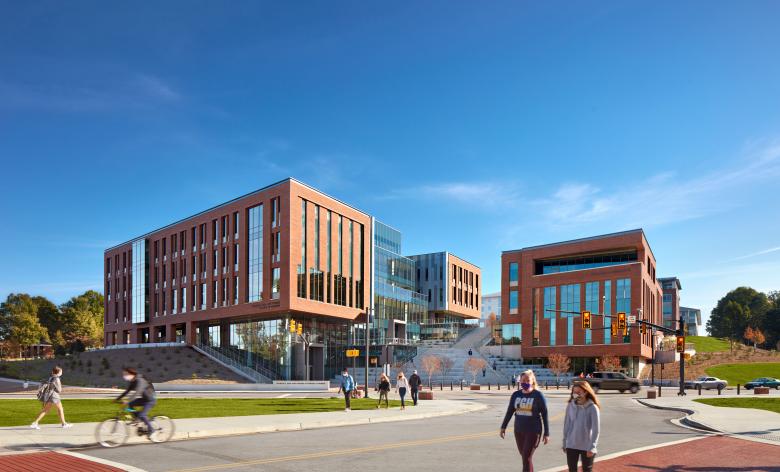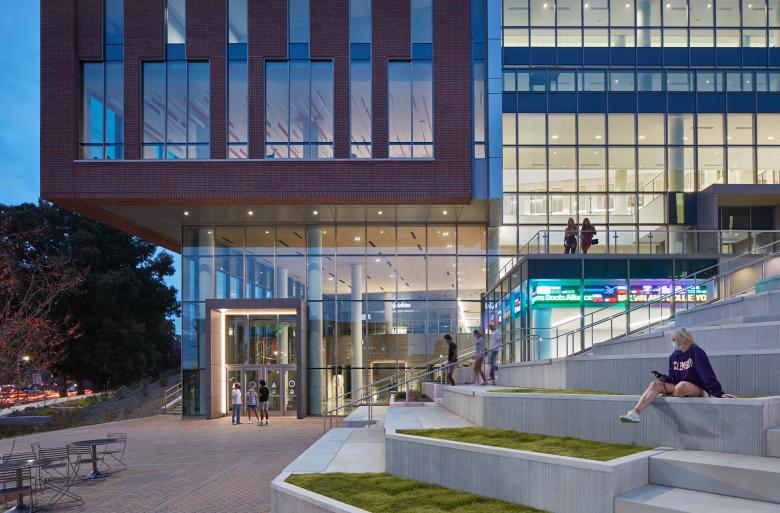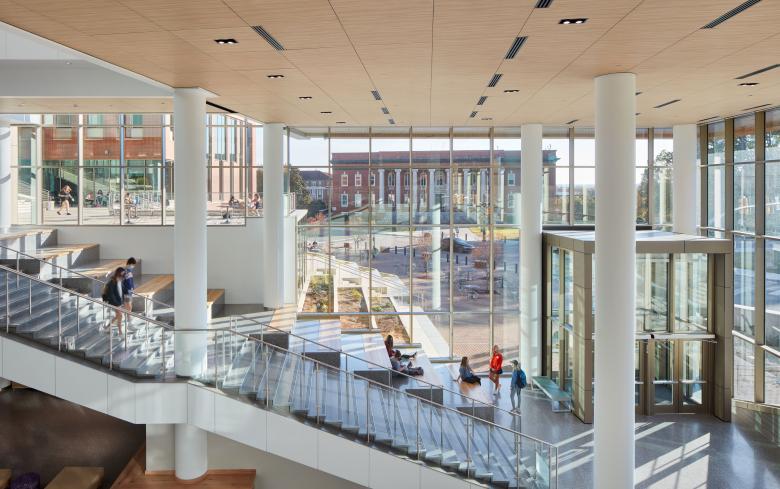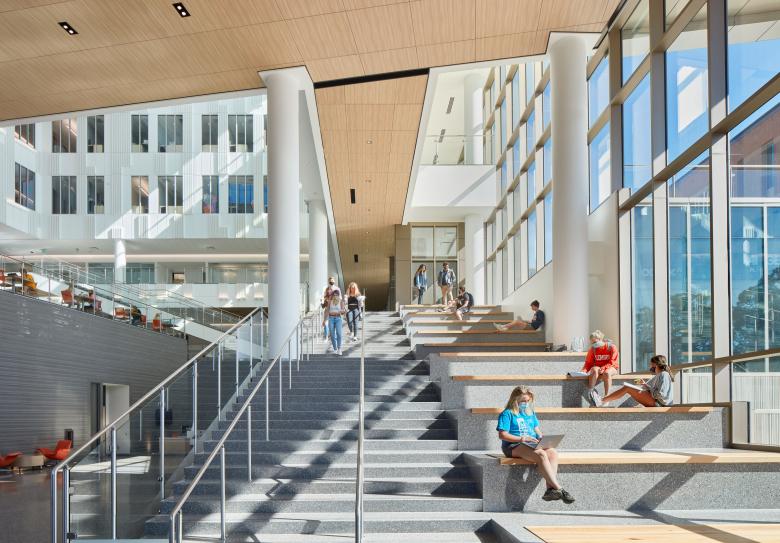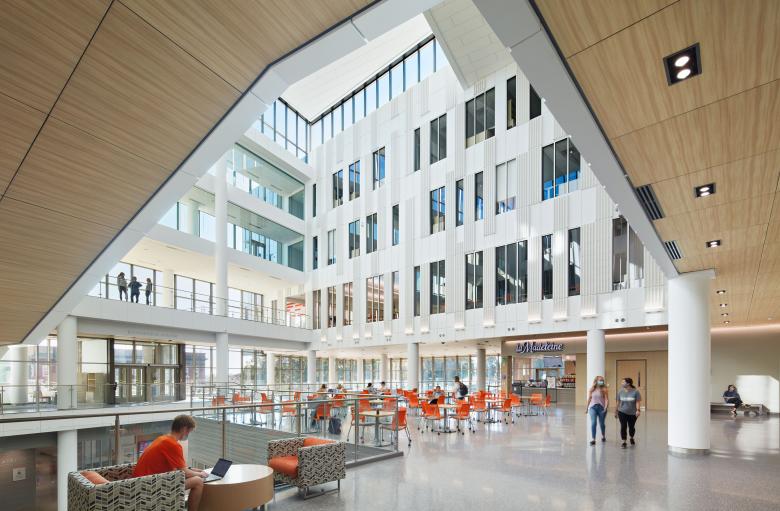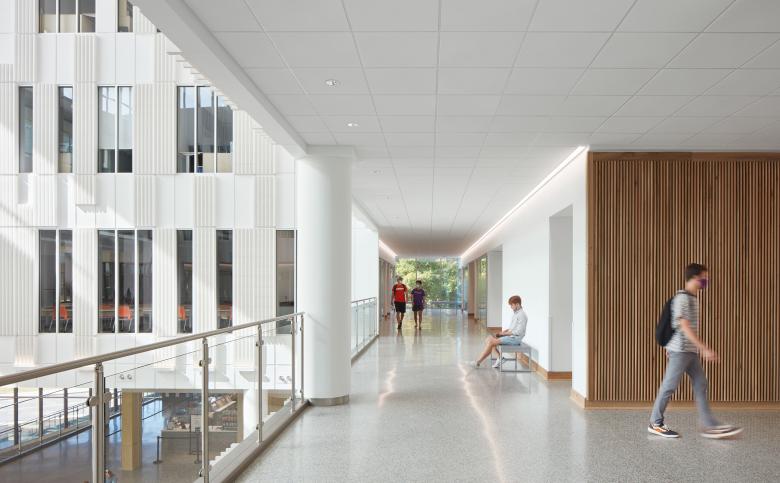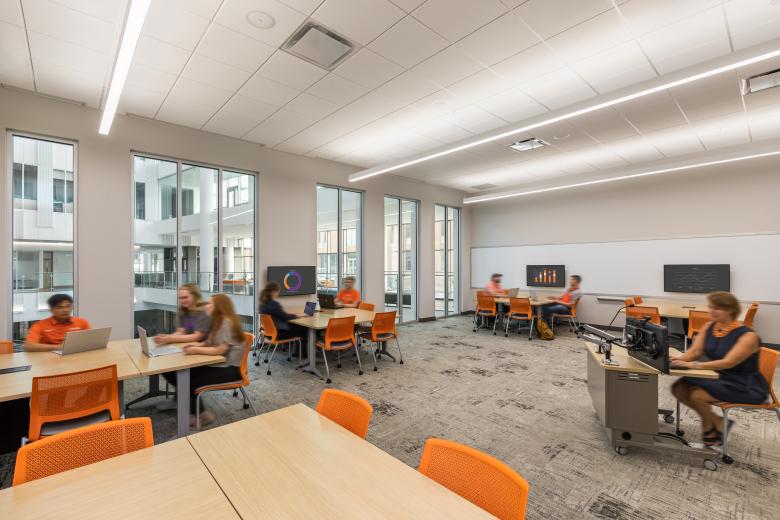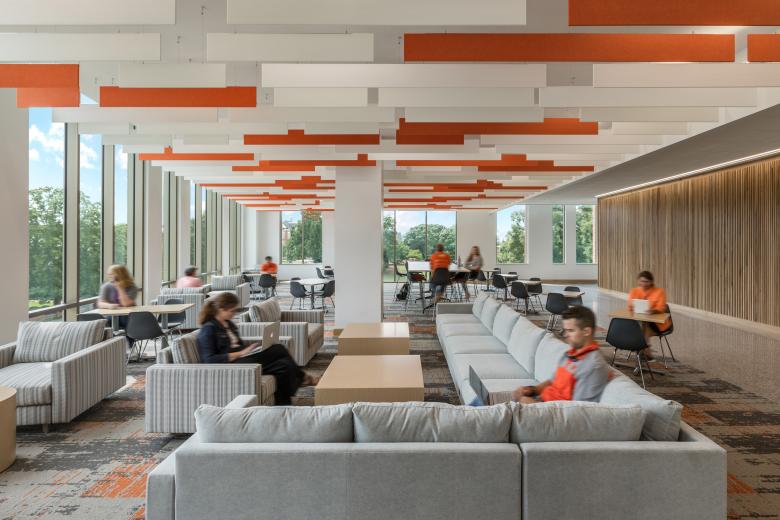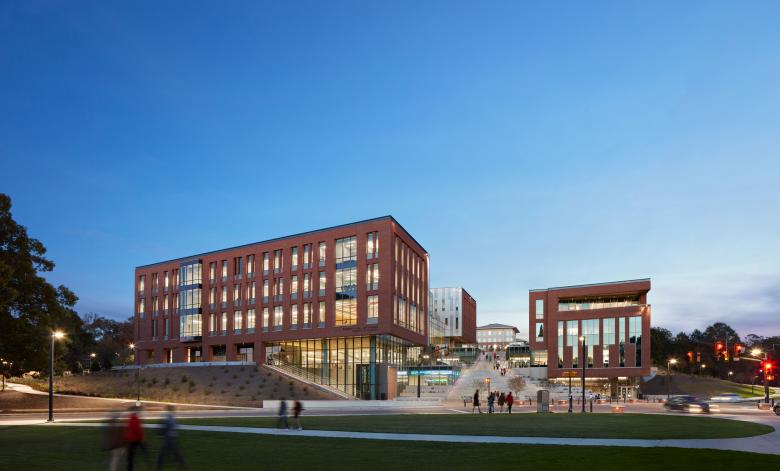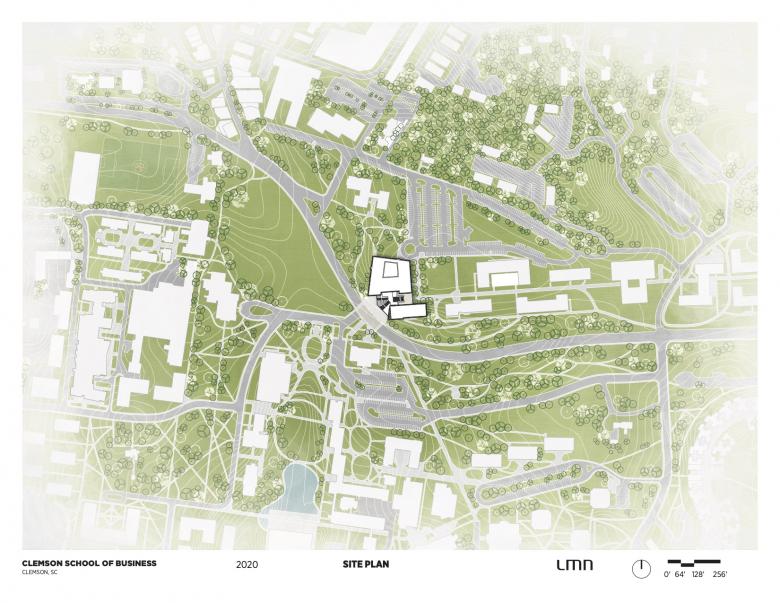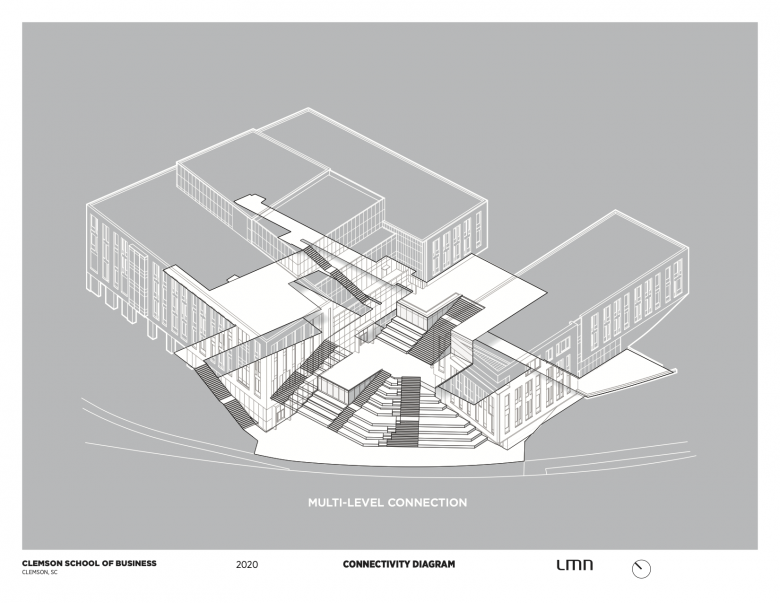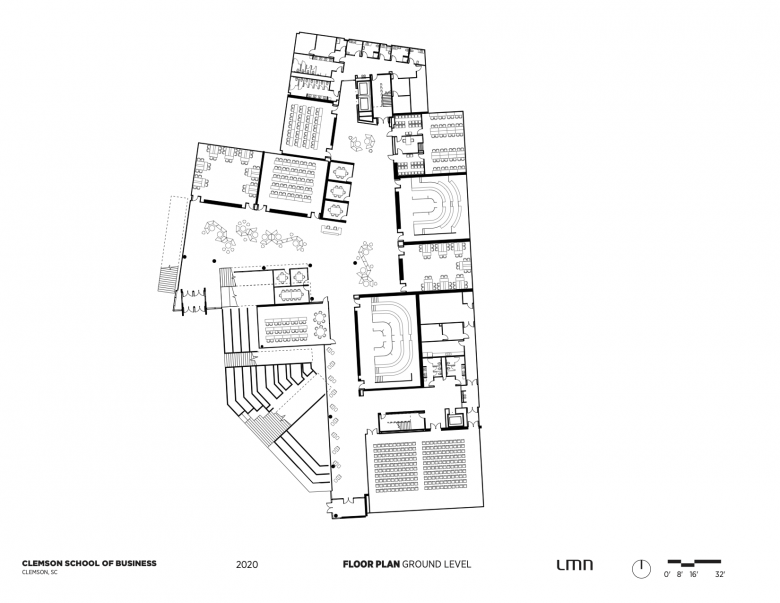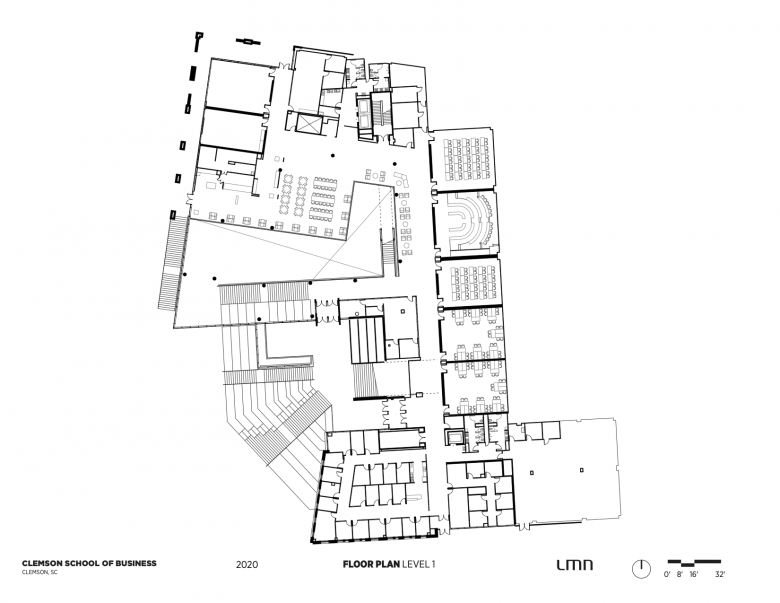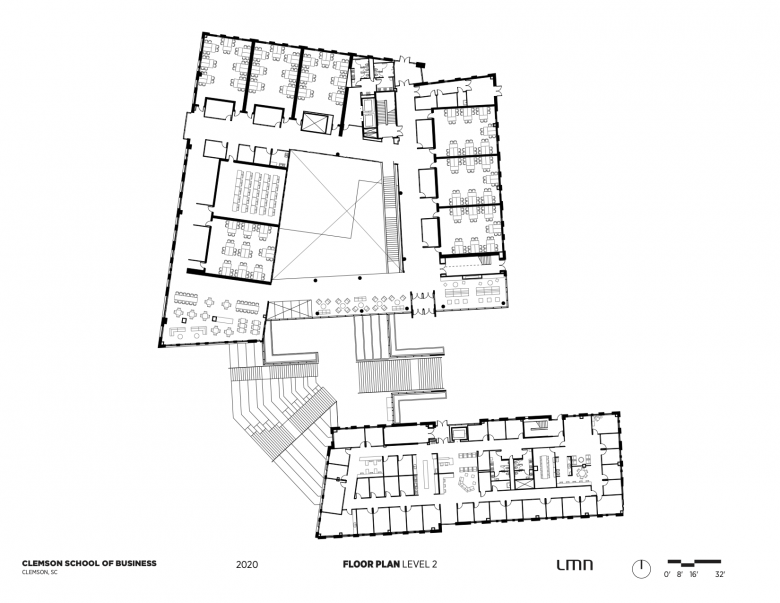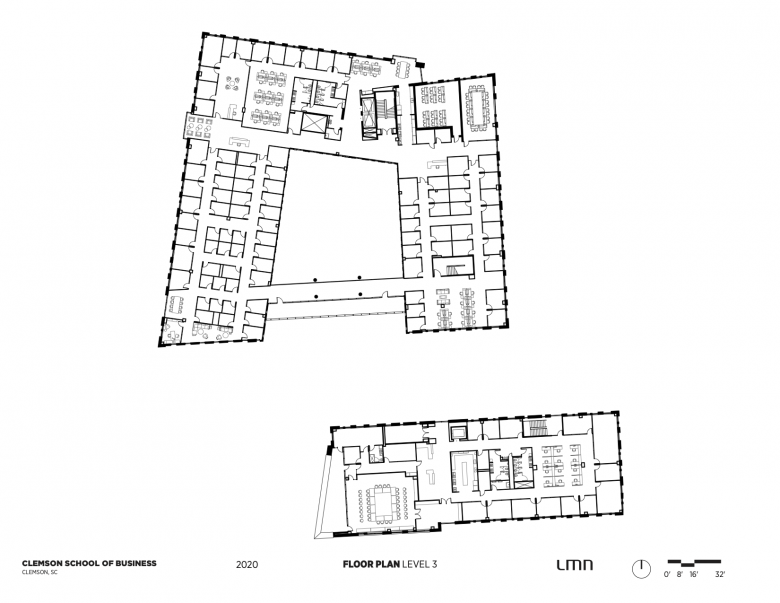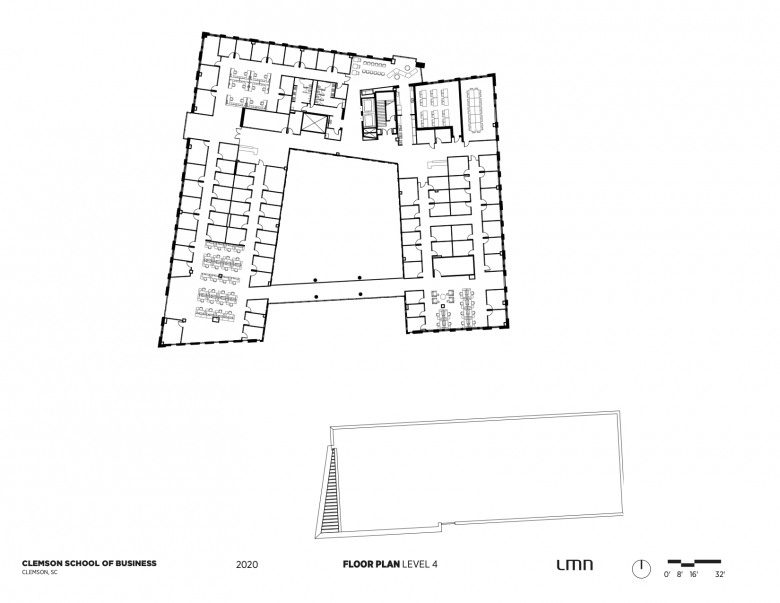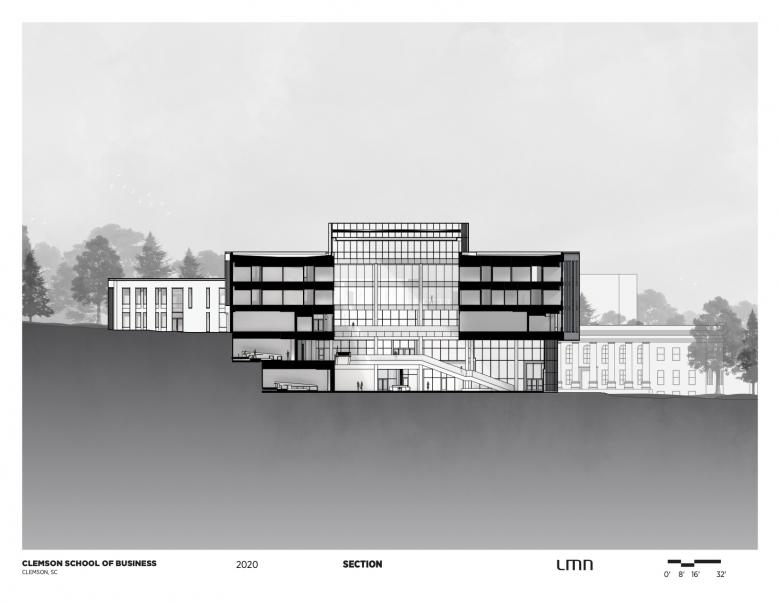US Building of the Week
Wilbur O. and Ann Powers College of Business
LMN Architects, LS3P Associates
23. May 2022
Photo: Mark Herboth Photography
Located on axis with the famous clock tower of Clemson University's Tillman Hall and directly across the street from the equally iconic Bowman Field, the new Wilbur O. and Ann Powers College of Business features a design influenced strongly by its site conditions. LMN Architects answered a few questions about the project.
Location: Clemson, South Carolina, USA
Client: Clemson University
Architect: LMN Architects
- Project Team: Jennifer Chen, Linnea Cook, Scott Crawford, Michael Day, Mette Greenshields, Eun Jun, Kyle Kiser, Lauren Patnoe, Erik Perka, David Schneider, George Shaw, Robert Smith, Liem Tran, Ka Yan Tsang, Rafael Vinoly, Masako Wada, John Williamson, Rushyan Yen
Contractor: DPR Construction
Structural Engineer: Thornton Tomasetti
MEP & Fire Protection: RMF Engineering, Inc.
Landscape Architect: Ayers Saint Gross
Civil Engineer: Land Planning Associates, Inc.
Lighting Designer HLB Lighting
Audio-visual: BrightTree Studios
Transportation: Stantec Consulting
Food Service: Le Duff America, Inc.
Site Area: 15.84 acres
Floor Area: 176,000 sf
Photo: Mark Herboth Photography
What were the circumstances of receiving the commission for this project?We responded to an RFQ/RFP process from Clemson University. The two-stage process included in-person interviews with the dean of the College of Business and key stakeholders.
Photo: Mark Herboth Photography
Please provide an overview of the project.The new College of Business building is a 170,000-square-foot facility over five levels, and includes classroom, faculty and staff offices, quiet and team study areas, and informal gathering spaces including a café and central atrium. The project is the first new academic building in 100 years on the historic campus core, and links new student residences with the academic heart of campus.
Photo: Mark Herboth Photography
What are the main ideas and inspirations influencing the design of the building?The fundamental concept for the project was to create a gathering space for students from throughout campus to enrich the social and academic experience of students within the College of Business. The adjacent historic landmarks on Bowman Field required a design that would be both forward-looking and a sympathetic neighbor.
Photo: Mark Herboth Photography
How does the design respond to the unique qualities of the site?In addition to its prominent “gateway” location on historic Bowman Field, the project sits at the base of a significant topographic hill leading to a new residential campus. The building was designed as two wings flanking a pedestrian “hillclimb” that directs student traffic through the heart of the building, with a central atrium opening directly to the steps and terraces of the hillclimb. It leverages site topography to create multiple “front door” opportunities on the first three levels of the building, engaging the surrounding context and amplifying the connections between internal programmed spaces and the broader campus.
Photo: Mark Herboth Photography
How did the project change between the initial design stage and the completion of the building?The most significant evolution of the project was in the facade expression, which developed as a result of a rigorous analysis of the modulation and materiality of the surrounding historic landmarks on Bowman Field.
Photo: Mark Herboth Photography
Was the project influenced by any trends in energy-conservation, construction, or design?One of the main features of the project was the incorporation of electrochromic glazing at the south face of the main atrium, which allowed for significant reductions in the design and capacity of the mechanical system, while also modulating glare. It has allowed the space to be bathed in daylight while reducing glare issues that the university had experienced on previous recent projects on campus.
Photo: Mark Herboth Photography
What products or materials have contributed to the success of the completed building?The brick masonry on the exterior was selected as a result of a detailed analysis of the surrounding structures, creating a blend of colors which is unique to the College of Business but complements and blends with the existing historic buildings.
Email interview conducted by John Hill.
Photo: Mark Herboth Photography
Photo: Mark Herboth Photography
Photo: Mark Herboth Photography
Photo: Mark Herboth Photography
Drawing courtesy of LMN Architects
Drawing courtesy of LMN Architects
Drawing courtesy of LMN Architects
Drawing courtesy of LMN Architects
Drawing courtesy of LMN Architects
Drawing courtesy of LMN Architects
Drawing courtesy of LMN Architects
Drawing courtesy of LMN Architects
Related articles
-
Wilbur O. and Ann Powers College of Business
on 5/23/22
